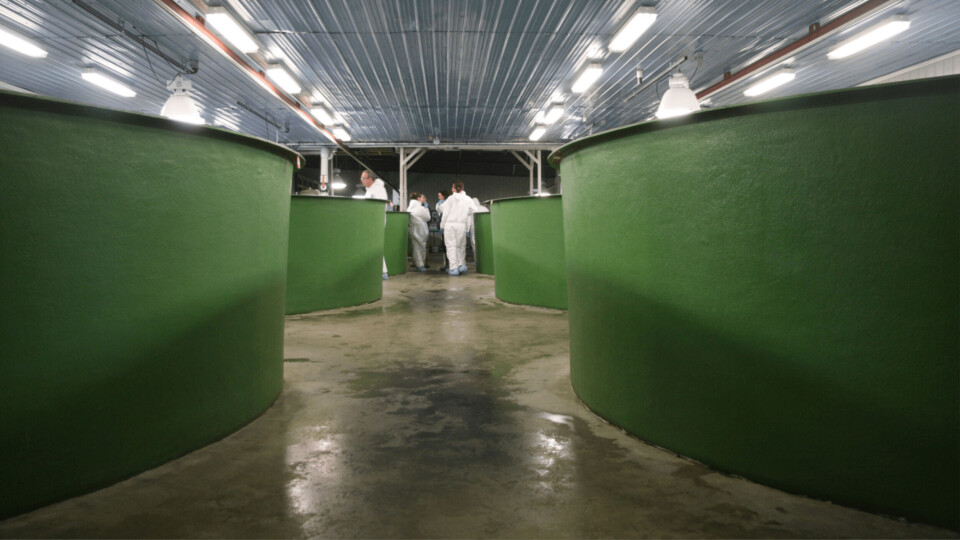
Farmers welcome New Brunswick’s big smolts push
Salmon farmers in New Brunswick, Canada, have welcomed a supportive policy document from the provincial government that proposes the creation of on-land post-smolt facilities as a means of increasing production volumes.
In its recently published Finfish Aquaculture Growth Strategy, the Government of New Brunswick (GNB) points out that finfish production in the province, which is predominantly Atlantic salmon, peaked in 2012 at just over 30,000 tonnes worth an export value of $213 million. As of 2020, production dropped to 18,900 tonnes with an export value of $242m.
GNB wants volume increased and says opportunities for growth of salmon aquaculture in the Atlantic province remain substantial given the potential for innovations such as land-based growth, technological advances, and product diversification.
500-gram-plus smolts
“New Brunswick’s goal is to support land based ‘post-smolt’ facilities producing hatchery fish grown from the normal 150-gram fish to [more than] 500-gram fish prior to release in marine cages,” it states in its strategy.
It adds that this would provide multiple benefits such as reduced exposure to disease and sea-lice in the marine environment, greater control on production and growth, the ability to mimic growth and production techniques exhibited in Canada and worldwide, and better marine site utilisation allowing for potential to revisit current Bay Management Plans.
Its timetable includes hiring a hydrologist to provide expertise in identification of suitable areas for land-based aquaculture production next month and assessing and identifying at least two additional suitable areas for land-based aquaculture production by October.

Susan Farquharson, executive director of the Atlantic Canada Fish Farmers’ Association (ACFFA), said the strategy marked an important step forward for the province’s salmon sector.
“The Province of New Brunswick has supported the development of salmon farming since its beginnings, including industry innovations such as the Aquaculture Bay Management System, green sea lice treatments and the world’s first wild salmon conservation farm located in Dark Harbour,” said Farquharson.
“We applaud the Province of New Brunswick for clearly recognising the importance of salmon farming to our food security and economy. The strategy establishes an achievable and promising path forward for the industry, which in turn will help grow our entire province and support New Brunswickers.
Key milestones
“The strategy includes key milestones for exciting technological advancements such as post-smolt systems which will require several provincial agencies to work together to make this achievable. Post-smolt systems allow our farmers to grow their fish longer and larger on land and reduce the time our fish are exposed to the marine environment by 50%.”
GNB’s support for larger post-smolts matches that of salmon farming companies in Norway, the Faroe Islands and Scotland that are either already growing or intending to grow bigger, more robust post-smolts for grow-out in open-net pens.
Open-net pens
It is a markedly different approach to the Liberal-led federal government, which intends to “transition” salmon farming away from open-net pens in British Columbia and has not yet said whether licences for 79 BC salmon farms that are due to expire in June will be renewed.
The federal government issues licences for farms in BC, but not in Atlantic Canada, where provinces issue both leases and licences.
According to ACFFA, a 2020 study found that the total economic impacts of the farmed salmon sector amounted to just under $2 billion in output and $800 million in gross domestic product, with about $350 million in salaries going to more than 8,000 workers in Atlantic Canada.






















































